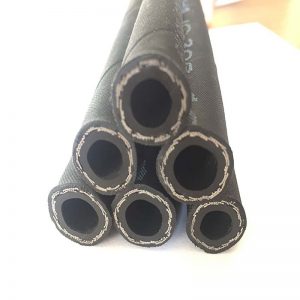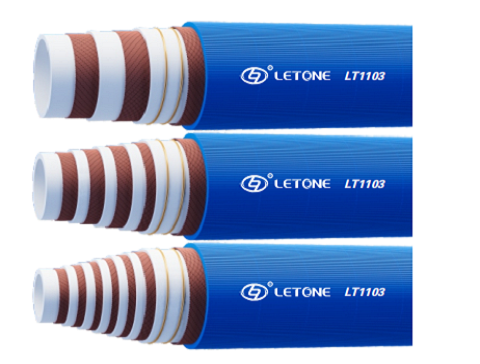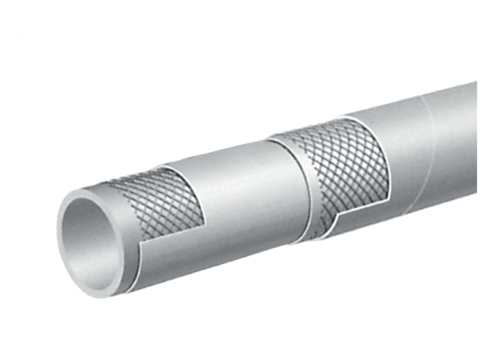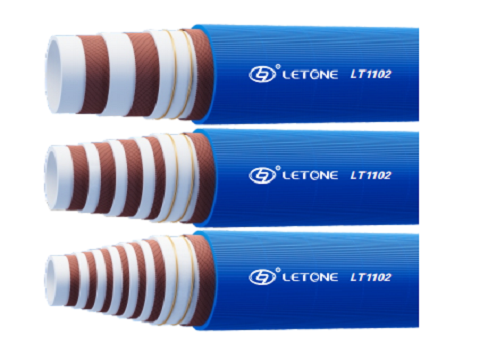Rubber hoses for suction and drainage are a pipeline material with excellent performance, widely used in fields such as agriculture, industry, and households. It has advantages such as corrosion resistance, aging resistance, high temperature resistance, and low temperature resistance, so it can maintain good service life and performance in various environments.
When producing suction and drainage rubber hoses, high-quality rubber materials such as natural rubber and synthetic rubber are usually used as the main raw materials, and various additives and fillers are added. They are processed through mixing, rolling, vulcanization and other processes. The structure of suction and drainage rubber hoses is generally divided into three layers, namely the inner rubber layer, reinforcement layer, and outer rubber layer. The inner adhesive layer has excellent sealing performance and wear resistance, the reinforcing layer can improve the strength and pressure resistance of the pipeline, and the outer adhesive layer can protect the pipeline from the influence of the external environment.
Rubber hoses for suction and drainage have various advantages. Firstly, it has excellent sealing performance, which can effectively prevent water leakage and pollution. Secondly, it has corrosion resistance and can maintain good performance in various chemical substances and environments. In addition, it also has aging resistance and can be used for a long time in natural environments without deterioration. Finally, it also features lightweight and easy installation, making it easy to connect various pipelines and equipment.
When selecting suction and drainage rubber hoses, factors such as working pressure, usage environment, and pipeline size need to be considered. Generally speaking, the working pressure of the suction and drainage rubber hose should not be too high, otherwise it may cause damage. At the same time, it is also necessary to consider its usage environment, such as temperature, humidity, chemical substances, etc., in order to select suitable materials and structures. In addition, pipeline size is also one of the factors that needs to be considered to avoid pipeline blockage and material waste.
 When installing and using suction and drainage rubber hoses, the following points should be noted. Firstly, it is necessary to install and use according to the instructions or operating procedures to ensure safety and normal use. Secondly, it is necessary to avoid damage to the pipeline from sharp objects or chemicals to prevent water leakage or damage to the pipeline. In addition, it is necessary to regularly check the working condition and service life of pipelines, replace aging pipelines or components in a timely manner, to ensure the normal operation and effectiveness of pipelines.
In summary, rubber hoses for suction and drainage are a pipeline material with excellent performance, widely used in various fields. During production, selection, installation, and use, attention should be paid to various factors and details to ensure its normal operation and effectiveness. At the same time, attention should also be paid to safety issues and service life to avoid accidents or economic losses.
When installing and using suction and drainage rubber hoses, the following points should be noted. Firstly, it is necessary to install and use according to the instructions or operating procedures to ensure safety and normal use. Secondly, it is necessary to avoid damage to the pipeline from sharp objects or chemicals to prevent water leakage or damage to the pipeline. In addition, it is necessary to regularly check the working condition and service life of pipelines, replace aging pipelines or components in a timely manner, to ensure the normal operation and effectiveness of pipelines.
In summary, rubber hoses for suction and drainage are a pipeline material with excellent performance, widely used in various fields. During production, selection, installation, and use, attention should be paid to various factors and details to ensure its normal operation and effectiveness. At the same time, attention should also be paid to safety issues and service life to avoid accidents or economic losses.







